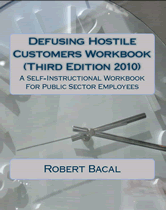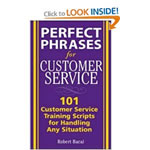
Effective Meetings
Managing Meeting Problems
If you are called upon to chair meetings, you will doubtless encounter some common problems that occur when any group of people get together. While these problems are common, if they are left unmanaged, they will cause long term problems. Unmanaged meeting problems will result in wasted time, frustration, and a general dread of attending meetings in which these problems occur unchecked.
Before we discuss some strategies for addressing these common problems, one basic approach needs to be stressed. Make sure that there are agreed-upon roles and processes for the meetings. That is, it must be clear to all attendees what is expected in terms of behaviour, and how breeches of these expectations will be dealt with. One critical role that MUST be defined is that of the chair. Attendees and the chairperson must be on the same wavelength.
We suggest that a group that meets on a regular basis establish meeting parameters, roles and chairperson authorities early in their life cycle. We also suggest that the group revisit these parameters periodically to see if they are working, or need revision.
Remember that when roles and authorities are not clear from the outset, meetings can deteriorate into procedural wranglings" that are largely unproductive. Get the roles clear from the beginning so that you will not have to deal with them in each and every meeting.
Long-Windedness
Some people are naturally long-winded. They talk a lot. Unfortunately, long-winded people can monopolize meeting time, and turn off other meeting participants.
If you are chairing a meeting with long-winded people in attendance, you need to take some action. The general rule to any intervention is to start with the most subtle or mild approach, and then increase "force" as required.
Try using a non-verbal "stop sign". One common one is holding up one's hand, palm outward towards the speaker. Generally, this will be better received by the speaker if it is accompanied by a smile rather than a frown or obvious anger. Make sure that you don't thrust your hand too quickly, since that will be considered an aggressive act.
Another non-verbal tactic is the "Aha sign". The "aha sign" consists of one finger held up, and is used to signify that you are enthusiastic about a point the speaker has made. Generally, you will follow up this sign with a comment like "John, your point about x is excellent. I really want to hear what Barb thinks about that idea." You couple the non-verbal sign with what we call a "redirect" cue (see next point).
Use the redirect cue to signify that you want another person to respond to the issue. It is best to jump in when the speaker is catching a breath, saying something like "Mary, thank you for your ideas. Brent, do you have any comments on whether we should [whatever]?"
Finally, you may have to take a strong stance. For example, interrupt with "Fred, we have agreed that it is important that we accomplish x,y, and z before we leave today. I appreciate your comments, but I am going to insist that we move on. Perhaps if we have time at the end of the meeting, we can come back to this." Then move immediately to the next agenda item. Keep in mind that this approach may result in some ruffled feathers. It may be appropriate to speak privately to the long-winded person after the meeting to explain why you felt this was necessary so that meeting goals would be met.
Involving The Silent
Some people are naturally reticent to speak in meetings. The chairperson must respect individual differences of this type, while at the same time setting up a climate that increases comfort levels, and inviting quiet attendees to be more involved.
You can ask silent group members to be involved. The way you do it is important. The best approach to involve a shyer person is to pose a specific question to that person. The question should be one that the person can answer easily. After the initial answer, you can probe for more detail. For example:
Chair: John, you talk to more customers than any of us. Do they ever talk about what they want from us?
John: Uhh...sometimes.
Chair: What kinds of things do they tell you?
Also, make sure that meetings are respectful and that ideas and people are not attacked. Again, enforce rules that have been established by group consensus early on. If necessary, when a person's position is being challenged, support that person by highlighting a positive aspect of what the person has said.
If there are chronic silent meeting attendees, you may want to approach each one privately to ask if they are benefitting from attending meetings, and to find out if there is any way that the meetings can be made more effective.
Managing Disputes
Conflict in meetings can be productive. If the conflict energy can be funnelled into developing constructive solutions, new ideas can emerge from the conflict. However, some disputes that occur in meetings are about things other than finding solutions. They may be about personal agendas, stylistic differences, power or other things. Meetings are usually not the best place to address these agendas.
Disputes that are non-constructive are characterized by lack of listening, personal attacks or innuendo, and hostile tones of voice.
First, the chair should avoid taking sides if the dispute is non-constructive, although if the chair is also the group manager, it may be necessary to supply an arbitrary solution. If the chair is at the same organizational level as the disputing parties, stay away from taking a side.
Second, stop the dispute early. As soon as you see signs that the discussion is becoming non-constructive or insulting, jump in. For example, you can say something like "I don't think we are going to resolve your disagreement at this point, so I am going to ask that we move on. John and Mary may want to talk about this in private."
Or, "Remember that we agreed that we would discuss issues rather than personalities. If we can return to the issue at hand, we can continue this important discussion, otherwise I am going to ask that we stop now."
Third, don't become involved emotionally. React calmly and firmly, not with anger.
Finally, if a full scale verbal brawl ensues, consider adjourning the meeting. A coffee break may be enough to cool off tempers. If not, the meeting may have to be stopped. There is no point having non-constructive angry discussions where nobody is listening.
Conclusion
The chairperson plays important roles in managing meeting problems that occur. If rules have been developed by the group, it is far easier to enforce these rules without appearing to be arbitrary or heavy-handed. By managing the long-winded, the silent people involved in disputes, a considerable amount of time can be saved, and meeting can become more productive and positive for all those attending.





